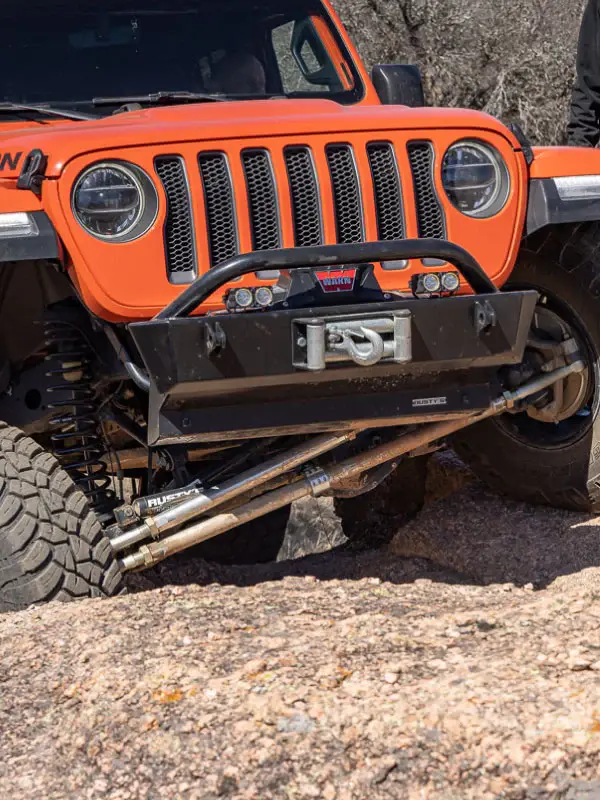The #1 Mistake Jeep Owners Make When Buying a Bumper (And How to Avoid It)
- rustysoffroad
- Jun 13
- 3 min read
Upgrading your Jeep’s bumper seems simple, until it’s not. With so many styles, features, and materials to choose from, it’s easy to get caught up in the look without thinking about function. And that’s the #1 mistake Jeep owners make: choosing style over purpose.
Sure, that beefy steel bumper might turn heads, but if it doesn’t match your driving needs, it could end up being a waste of money, or worse, a pain on the trail.

It’s Not Just About Looks
We get it. A fresh bumper makes your Jeep look meaner and trail-ready. But ask yourself this: What do I actually need it to do? Is your rig a daily driver with weekend trail runs? Are you building for overlanding? Rock crawling? Recovery support?
A bumper should match how you use your Jeep. Otherwise, you might end up with too much weight, missing features, or poor approach angles. And once it’s bolted on, that mistake gets expensive to fix.
Weight Can Be a Killer
Another common issue? Weight. Heavy bumpers add stress to your suspension, brakes, and fuel economy. If you’re running stock coils and slap on a steel bumper with a winch mount, you might notice sagging in the front. That could affect your steering and ride quality.
Some jeep XJ/TJ/LJ/JL/JK/JT bumpers are designed to be lightweight but still strong. Look for options made from aluminum or tube-style steel if you want function without the added bulk.
Not All Bumpers Fit the Same
You’ve got a lot of Jeep models out there—XJ, TJ, LJ, JL, JK, JT, and not every bumper fits every rig. Some folks order the wrong one, thinking one size fits all. That’s not the case. Mounting points, frame width, and electrical hookups can all vary.
If you're driving a TJ or XJ, double-check compatibility before you hit the buy button. Some jeep XJ/TJ/LJ/JL/JK/JT bumpers are sold as “universal,” but may require drilling or trimming. A bolt-on bumper saves a ton of hassle.
Ignoring Recovery Points
A bumper without recovery points? That’s a rookie move. Whether it’s D-ring mounts or a winch plate, solid recovery options are non-negotiable. You don’t want to be stuck in the mud wishing your shiny bumper could actually help get you out.
Some rear bumpers even integrate a hitch mount or tire carrier. If you’re building your Jeep for real off-road use, make sure those features are on your checklist.
Overlooking Approach Angles
A bulky front bumper might look tough, but it can wreck your approach angle. That’s the angle between your front tires and the lowest point of your bumper. If it sticks out too far, you’ll scrape on rocks and ledges more often. Not fun.
Many jeep XJ/TJ/LJ/JL/JK/JT bumpers are designed with high-clearance ends that tuck up close to the body. These are way better for trail work and look sharp too.
How to Avoid This Mistake
So how do you keep from buying the wrong bumper? Easy:
1. Know your driving style.
2. Match the bumper to your rig’s setup.
3. Don’t ignore recovery and clearance features.
4. Double-check model compatibility.
And always think ahead. If you plan to add a winch later, buy a bumper that supports one now.
Final Thoughts
A good bumper upgrade should do more than just look cool, it should enhance your Jeep’s performance and utility. Avoid the hype, focus on function, and your bumper will be a solid investment, not a regret.




Comments